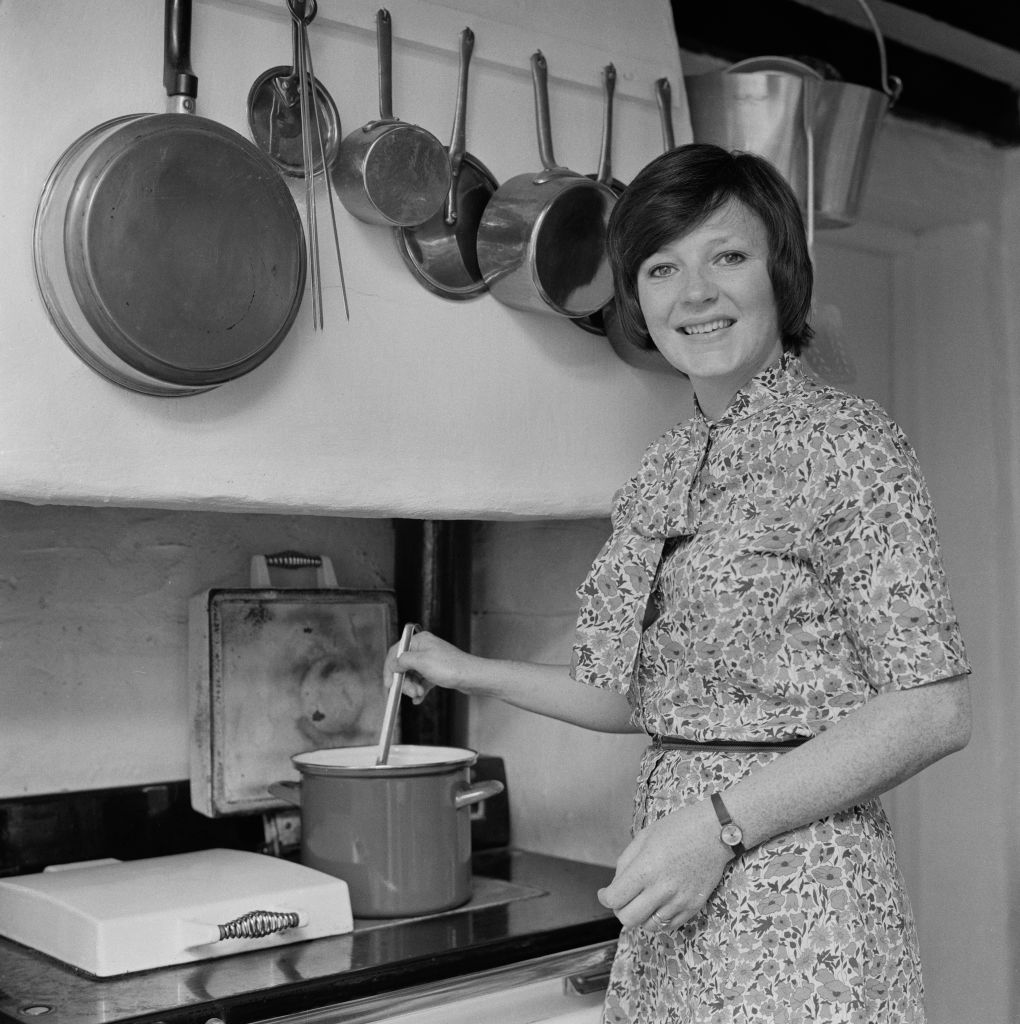They’re now such common ingredients that you can buy them in all but the smallest shops: halloumi, pesto, couscous, salsa, roasted peppers. But their origins as culinary staples can be traced back to the publication 30 years ago of Delia Smith’s Summer Collection.
This book and the accompanying TV series changed British cooking forever. Delia didn’t invent much but she brought things to the mainstream.
The unprecedented success of Summer Collection – both the book and the show – also made Smith into the biggest figure in British cooking for a decade or more. The follow-up, entitled, rather obviously, Winter Collection, built on Summer’s success to become one of the best-selling books of the decade in any field.
Nineties Delia was bigger than Blur, bigger than Oasis. Her subsequent three-volume How to Cook was so popular it was credited with causing weekly runs on ingredients and kit. Not just specialist pans, but even eggs themselves would sell out in the days after she’d broadcast a new omelette recipe.
Such was her ubiquity in the period following Summer Collection that a contemporary Private Eye cartoon showed guests at a middle-class dinner party saying suspiciously over their starter: ‘This isn’t in Delia.’

However, it’s not Summer Collection’s success that was enduringly significant – more its content.
Because Delia introduced the UK to things that were then exotic and have now become standard: that halloumi – fried cheese! – which came two ways, with a lime and caper vinaigrette as marinated kebabs, and other global exotica like tabbouleh, tapenade, pasta puttanesca, saltimbocca and many, many more. She had raided the global larder and brought it to Britain.
Delia was the missing link in British home cooking between Elizabeth David and Ottolenghi
These new delights sat alongside more recognisable postwar British fare like liver and onions, a leg of lamb with rosemary and mint sauce, rhubarb cobbler and gooseberry jelly.
Food writer and recipe columnist Nicola Miller said: “When Delia Smith’s Summer Collection came out, there was genuine excitement about its publication. Looking back, it feels like a different time for bookselling, yet Smith herself remains timeless.’
Of course Delia is a good deal less fashionable these days, passé almost in some scenarios. Take her Christmas instructions for turkey and trimmings, for example – her five-hour cooking time for a 13 lb bird would be widely considered much too long these days, her rest time of 45 minutes much too short.
And her exoticism – Thai red curry! – these days seems much less of a leap into the unknown. But that’s largely a consequence of her giving it mass appeal in the first place.
Miller again:
A lack of ego or grandiose theatre in Delia’s work makes her the perfect culinary teacher: she never gets in her own way and the home cook responds to this. After you’ve cooked one of her recipes, it feels properly your own.
Her testing and recipe writing are meticulous, and her food is utterly delicious. Her recipes work, and because of this, the home cook feels respected, which is even more important at a time when food and fuel are so expensive. I have thousands of cookbooks, but very few of them live in my kitchen. Delia Smith’s do. It’s where they belong.
With hindsight Delia was the missing link in British home cooking between Elizabeth David and Ottolenghi. She became part of the culture.
The enticing subtext with Delia was that despite her straight-laced appearance and slightly school ma’amish delivery there was always the hint that she was more bohemian at heart. There’s her association with high period Rolling Stones debauchery for starters – she famously baked the cake on the cover of 1969’s Let It Bleed. And for me there’s a tell in the instructions in her 1992 Christmas book, when she runs you through cooking the lengthy cooking of that turkey minute-by-minute and pointedly tells you at 1.30 p.m. to ‘have a pre-lunch glass of champagne, you deserve it’. ‘Thanks Delia, I will’, I always think at this point. And she reiterates as lunch is finished to ‘fill your glass’.
She publicly endeared herself further in this vein with what became an unlikely late career catchphrase: ‘Let’s be ‘aving you.’ This came in 2005 when she strode onto the pitch at half-time in a Norwich City match, seized a microphone and made this memorable rallying cry to the crowd. She looked a little unsteady on her feet – but then in fairness she was wearing heels. She later denied having been drunk but went down in football legend regardless.

A lifetime achievement honour at last year’s Guild of Food Writers Awards followed her admission to the Order of the Companions of Honour five years earlier – and a CBE before that. But for someone who until recently was so very well known, it’s extraordinary how low-profile she has lately become.
Delia, now 81, seems to have been eclipsed by the rise of social media which coincided with the point at which she began winding things down. These days we use social media as a metric of influence. So, compare Delia’s 60,000 Instagram following with, say, Nigella Lawson’s 3 million. No one loves Nigella more than me but is she really 50 times the kitchen influencer?
On the contrary, I’d argue that no one living has had more influence on what and how we eat – or taught us more about How to Cook – than Delia Smith.







Comments